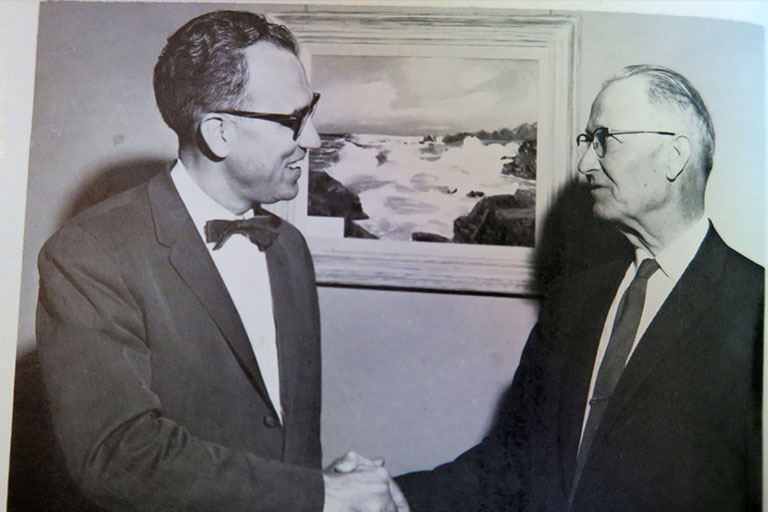"The Golden Years: 1928-1960," authored by Dr. Floyd Golden, the late second president of Eastern New Mexico University, details the years preceding the 1934 opening of Eastern through 1960.
Chapter 7 (final chapter)
"The Changing of the Guard"
By 1960 it dawned on Dr. Floyd Golden that retirement was a fact of life. He had been in Portales for 33 years, first as superintendent of the Portales Public Schools for six years, then the first dean of Eastern New Mexico Junior College for seven years, then as the second president of Eastern for 20 years.
His wife, Elsie, played a large role in his retirement decision. She had been insisting that he retire for three years since he had been eligible since then. "Floyd, I'd love to live with you for a few years after you retire, but as it is I will not have that privilege," she said. Shye realized that he was killing himself and said he would be lucky to live two more years at the rate he was going.
At the next meeting of the Board of Regents, he requested that he be given retirement on June 30, 1960.
After a nationwide search, the Board selected Dr. Donald C. Moyer, Executive Secretary of the New Mexico Educational Board of Finance, as the next president.
In a statement to the Board at their May 30, 1960, meeting, President Golden said:
"The approval of the Board allowing me to record a history ("The Golden Years") of the University is an action which will allow me to carry out a dream of many years. It has been a personal ambition since became President to develop this project. Many agree with me that Eastern New Mexico University has a very unique history…
"I know you will forgive me when I become sentimental in my thoughts. However, as you know, Eastern New Mexico University has been the greater part of our lives. We owe much to the people with whom we have been privileged to associate and work with.
"We hold much love and respect for the members of the Board, the faculty, the student, the alumni and the clientele of the University.
"We are also indebted to the great state of New Mexico where we have enjoyed living and working for the past thirty-three years."
On the morning of July 1, 1960, Dr. Moyer became the new president, and Dr. Golden became president emeritus.
In Chapter 7, the final chapter of "The Golden Years," Elsie Golden also shared memories:
"The contacts we had with the students were most gratifying. We became involved with the football boys and the fellows from the boy's dormitory because of my nephew, Jerry Pool.
"I have many times asked Floyd to count the 'humps' in our spare bed in order to determine how many extra breakfasts I would have to prepare. Many were the times when we had been out I the evening and returned to find boys all over the living room floor and on the dining room table studying. Of course, the icebox had been raided, and Floyd's supply of Vienna sausages was reduced.
"All this we thoroughly enjoyed. They all knew they were welcome to Big Auntie' and Uncle Floyd's home. Wish the gang would come again. I could list many names of fellows who continue to call us 'Big Auntie and Uncle Floyd.'"
Dr. Golden finished "The Golden Years" in June of 1974 — 14 years after his retirement as president. During those years he served as a consultant for an architectural firm building education buildings, started his own consulting firm, was a consultant for the College of Business at West Texas State University and had interests in cattle and cotton.
During his retirement, he and Elsie traveled across the country and to 30 other nations. One of his most enjoyable trips was to the 1968 Olympics in Mexico City with Coach Al Garten.
"The most enjoyable thing I have done since retiring was doing the research and writing the history of Eastern New Mexico University," Dr. Golden wrote. "Even though I was very closely associated with ENU from 1928 to 1961, I did not realize how much history the institution had really made."



